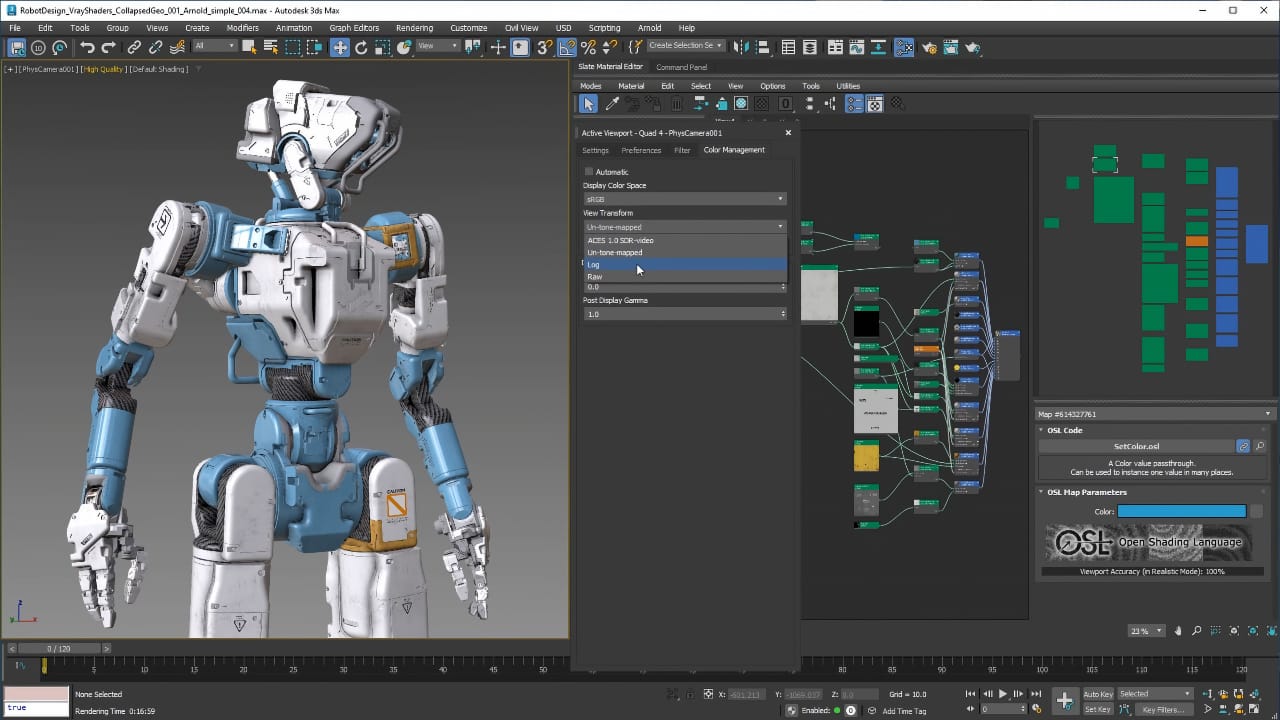
Ahead of NAB Show 2023, Autodesk has unveiled tweaks to its entire Media & Entertainment line-up, including new bells and whistles for Maya, 3ds Max, Bifrost, and Arnold.
Of course, this is 2023, and so the new bells and whistles are as likely to be enhancements and improvements when it comes to workflow as much as whizzy new features to help generate eye candy. It might all be a tad less sexy than the days when you could walk past a CG company’s NAB stand with your jaw scraping along the carpets of the LVCC, but this is arguably more important stuff.
So, new features for Autodesk Maya, 3ds Max, Bifrost, and Arnold, concentrate on further opening standards and bolstering artist-driven animation, modelling, and simulation workflows. They also boost performance with support for Apple Silicon. On top of that, the company also has a collaboration with Adobe to build a material standard, and another with Microsoft to unveil a beta version of AI-powered Maya Assist.
Here’s what’s new:
LookDevX, a new agnostic material editor in Maya, standardizes material workflows, allowing artists to create complex shading networks that can be shared freely and accurately throughout studio pipelines. With a modern, node-based environment, this enables artists to author a variety of materials like USDShade, Material X, and Arnold that can then be used by other artists across multiple projects.
There's also more integration of USD workflows across the portfolio, making it easier to move data through the post-production pipeline.
An expansion of the modelling toolset in 3ds Max with “fast, fluid, and fun” workflows for artists. These include a new Boolean modifier offers a modern and intuitive way to produce clean geometry, and updates to the Array modifier to help create nature-like scenes procedurally.
3ds max also gets new color management tools built around the Academy Color Encoding System (ACES) and OpenColorIO (OCIO). This gives artists complete control over colors with Color Management. From Viewport to final render, colors are predictable and consistent, so artists know that colors match and align at every phase of production.
On top of LookDevX and Hydra for Maya, Maya gains new tools and workflows across its animation, modeling, and simulation toolsets. These include updates to Retopologize and the Boolean toolset to give artists more creative control while modelling. Streamlined animation tools, including a redesigned Time Slider, make navigating and editing animations more fluid and intuitive.
Bifrost, Maya’s visual programming environment, offers a complete overhaul of viewport volume rendering, using new, state-of-the-art NanoVTT technology, as well as MPM Gel, a cool new capability that simulates substances such as soft-serve ice cream.
Maya — including Bifrost and Arnold for Maya — now runs natively on Apple Silicon, enabling artists to achieve new levels of performance while rendering.
Elsewhere, the company has also been working with OpenAI APIs to bring AI-assisted workflows to Maya. This is in a private beta of Maya Assist, which provides a new way of interacting with Maya scene data using Microsoft’s Azure OpenAI Service. Artists can now automatically manipulate scenes using natural language text prompts directly in Maya; speeding up tasks such as copying an object, increase an object’s size by 25%, or adding a camera and aiming it anywhere. The private beta launches on April 5 and you can apply at feedback.autodesk.com/key/MayaAssistFeedbackApplication.
And lastly, some details of Autodesk joining forces with Adobe on an open source material model. Here’s the statement on that:
“With the goal of standardizing material workflows and enabling smoother interoperability across the tools artists use, we’re also working to bring Autodesk Standard Surface and Adobe Standard Material into one new material model that can be used across product portfolios and adopted by the wider industry. Having a common material model will help artists and studios work more efficiently by facilitating the seamless exchange of 3D assets. We’re actively engaging with the MaterialX governance group to ensure that the new model can be integrated and fully encoded within a MaterialX node graph.”
Tags: Post & VFX


Comments